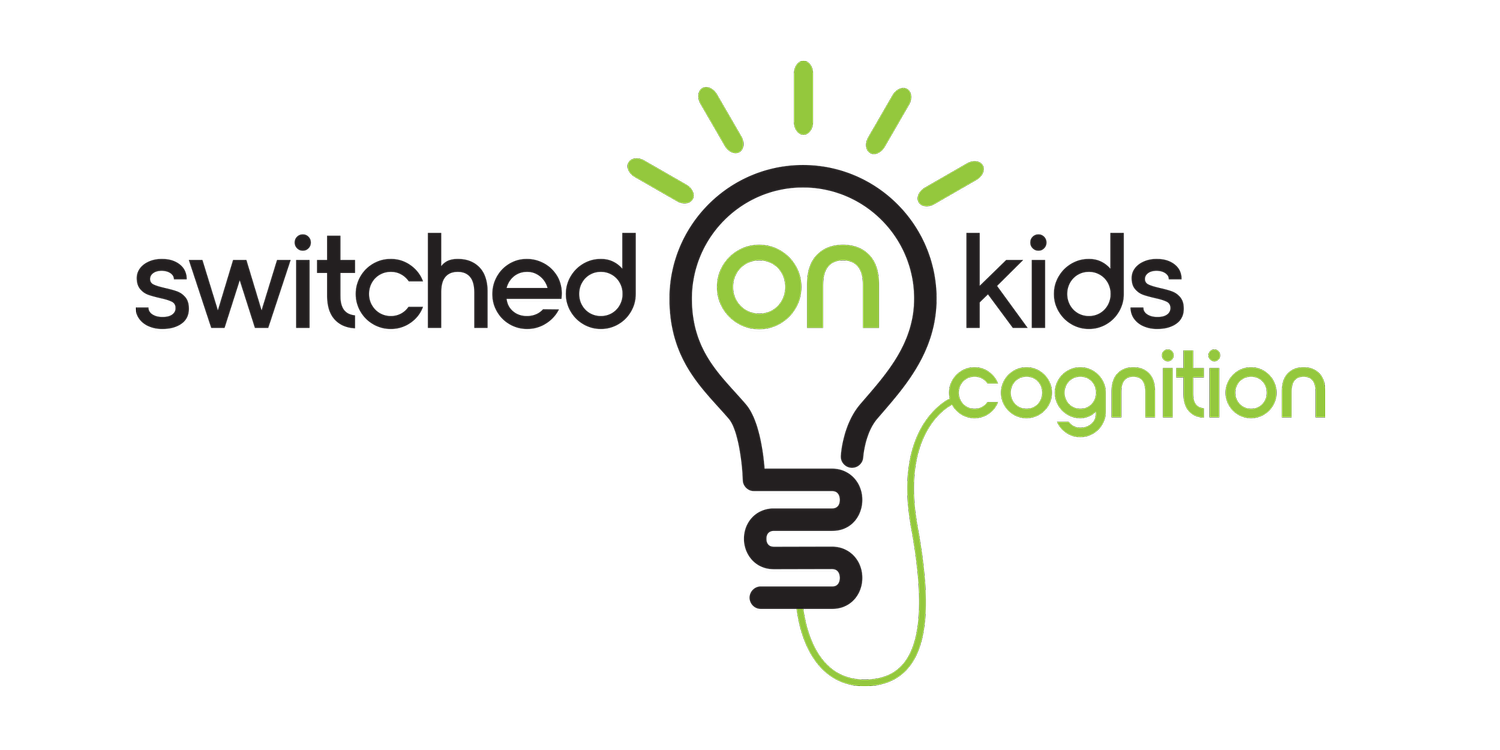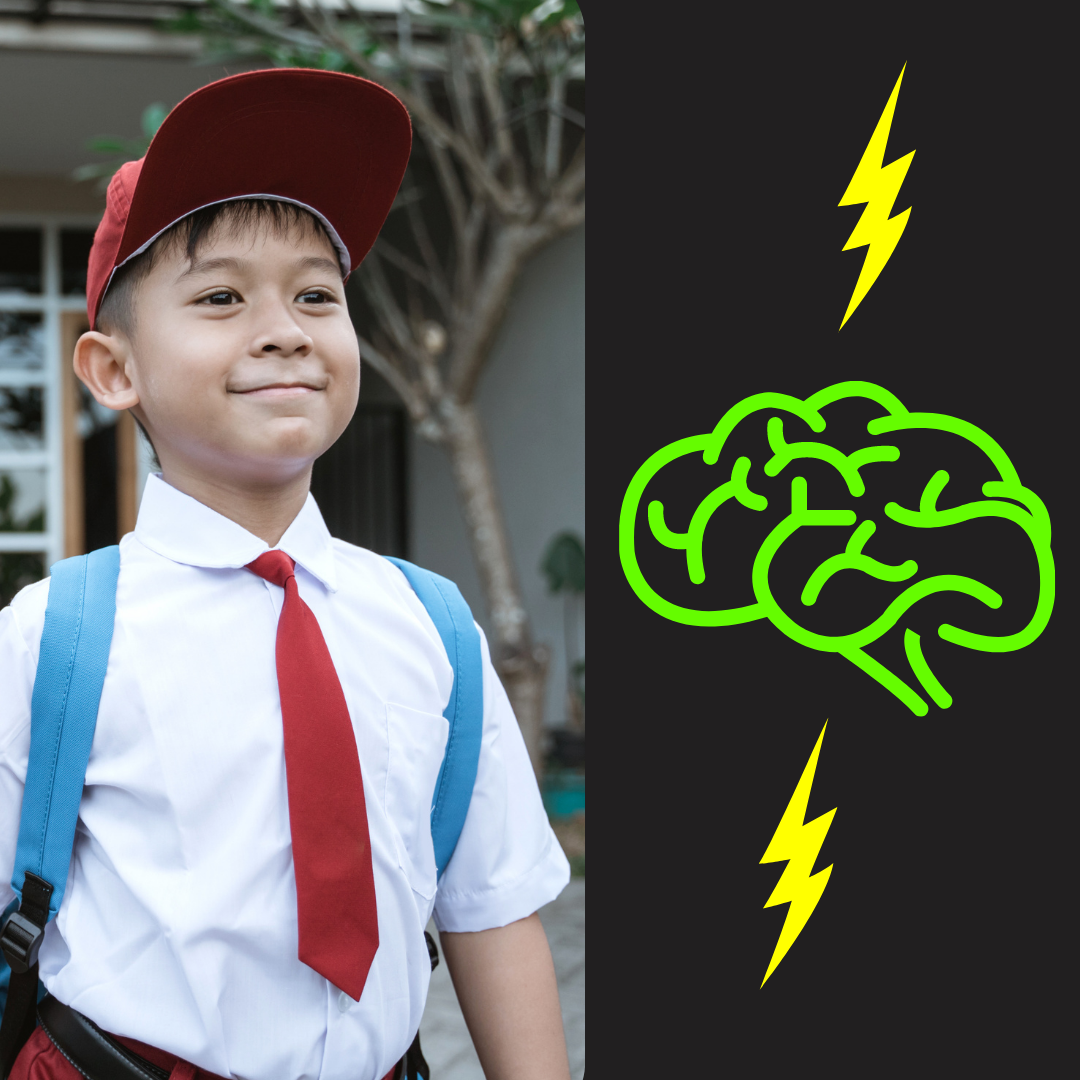Processing Speed
Processing speed is the rate at which our brain can take on new pieces of information. Neuroimaging studies suggest that processing speed is related to white matter pathways in the brain, or the “highways” along which information is transferred (Turken et al., 2008). Slow processing speed is common in kids with neurodevelopmental disorders (e.g., ADHD, autism, dyslexia, anxiety) and research finds that two-thirds of children with learning difficulties have slow processing speed (Weiler et al., 2003). This is huge and has major implications at home and in the classroom. Processing speed sub-tests are included in overall IQ test scores which means that slow processing speed will affect an IQ score. However, this does not mean a child has a low IQ.
Kids need fast processing to:
Quickly take in information from letters, symbols and words.
Perform basic math equations.
Compare and contrast similarities and differences.
Copy from the board.
Write notes.
Get work started and completed on time.
Most importantly – kids need fast processing to keep up with peers. Kids move fast! Kid conversation moves fast. Kids don’t have a pause button. This means that kids who are slower to process information may find themselves on the edge of friendship groups which affects confidence and social skills.
Many kids with slow processing speed are bright and will achieve well if they are appropriately supported. These kids are NOT lazy many are working twice as hard as their peers. They may be exhausted by the end of the day and easily affected by information overload. This can be frustrating for parents and teachers (not to mention for the child) but once we understand these kids, we can help them shine. There are many things that parents and teachers can do to support these kids.
Recognizing slow processing speed in children can be tricky. Slow processing speed is evident when kids need extra time to take in, process and respond to information. This can be auditory (e.g., hearing a set of spoken instructions) or visual (e.g., reading letters or words). For kids who struggle with slow processing speed, getting their work done in the classroom (on time) will be a constant struggle. Kids who process information slowly will have poor recall and be likely to make numerous simple errors. They will be tired and frustrated and give up fast. For kids with ADHD, it seems that deficits in working memory and slower information processing are relatively independent (Kofler et al., 2020). This means these kids have a double challenge when it comes to getting work and tasks completed.
Some kids with slow processing speed will appear super chilled out and almost as if they don’t care about academics and the fast-moving world around them. Some of these kids will be the “daydreamers” (possibly with inattentive ADHD). They tend to sit quietly and avoid being called on. They are often “lost” and tend to watch what their classmates are doing as they have missed instructions. These kids tend to become overwhelmed fast but do well one-on-one given time. Finally, we have the anxious kids. These kids tend to get stuck in a loop where slower processing speed heightens anxiety which then slows them down even further, possibly even resulting in meltdowns when they need to perform fast (for more information - Bright Kids Who Can’t Keep Up, Braaten & Willoughby, 2014).
The good news. There are loads of things we can do to speed up processing and help these kids.
Allow more time, press the pause button between instructions and tasks.
Avoid loooong, multistep instructions.
Repeat instructions if necessary.
Use visual cues where possible.
Reduce the amount of classwork/homework.
Allow shorter written responses.
Avoid timed tests.
Avoid information overload and excessive background noise.
Understand that slow processing speed may impact the learning phase – however, once the activity is mastered a child will perform just as well as their peers.
Provide extra repetition when learning new skills.
Work on fast visual discrimination – practice quick identification of letters, words, symbols, numbers.
Practice speeded activities for example, rapid automatic naming tasks, speeded letter/symbol/word/picture charts.
Look out for signs of anxiety (which may not always be obvious) and provide gentle encouragement and support.
Use a strengths-based approach to learning*
Improve weak cognitive skills that slow processing down further – e.g., visual and auditory processing, executive function skills, and working memory.
Help kids learn to monitor and manage distractions that pull them off-task
For kids who struggle with language, practicing verbal working memory activities is a must.
Encourage frequent movement breaks. Movement is alerting!
Reaching automaticity in certain skills is crucial for these kids. Any time a skill is automated, working memory is free to work on something else. Aim to automate skills such as sight words, simple addition and subtraction facts, and basic times tables.
There is some evidence to suggest that action-based video games can increase processing speed (Dye et al., 2009). However, the literature is a little contradictory and for the sake of vision and addiction make sure you limit time. I am a fan of certain games. Try playing Mario cart with an eight-year-old for a quick lesson on the importance of processing speed.
Remember: these kids do not lack knowledge, rather they lack speed and fluency of information processing. Slow the pace. These kids can get a tricky math question correct; it will just take a little extra time.
I have some great resources to help kids boost processing speed - please see HERE.
References
Braaten, E. & Willoughby, B. (2014). Bright Kids Who Can't Keep Up: Help Your Child Overcome Slow Processing Speed and Succeed in a Fast-Paced World. NY, USA: Guilford Press.
Dye, M.W.G., Green, S., & Bavelier, D. (2009). Increasing speed of processing with action video games. Current Directions in Psychological Science, 18(6), 321-326.
Kofler, M.J., Soto, E.F., Fosco, W.D., Irwin, L.N., Wells, E.L. & Sarver, D.E. (2020). Working Memory and Information Processing in ADHD: Evidence for Directionality of Effects. Neuropsychology; 34(2), 127–143.
Turken, A.U., Whitfield-Gabrieli, S., Bammer, R., Baldo, J., Dronkers, N.F., & Gabrieli, J.D.E. (2008). Cognitive processing speed and the structure of white matter pathways: Convergent evidence from normal variation and lesion studies. NeuroImage, 42(2), 1032-1044.
Weiler, M. D, Forbes, P.W, Kirkwood, M.W., & Waber, D.P. (2003). The developmental course of processing speed in children with and without learning disabilities. Journal of Experimental Child Psychology, 85(2), 178-94.


